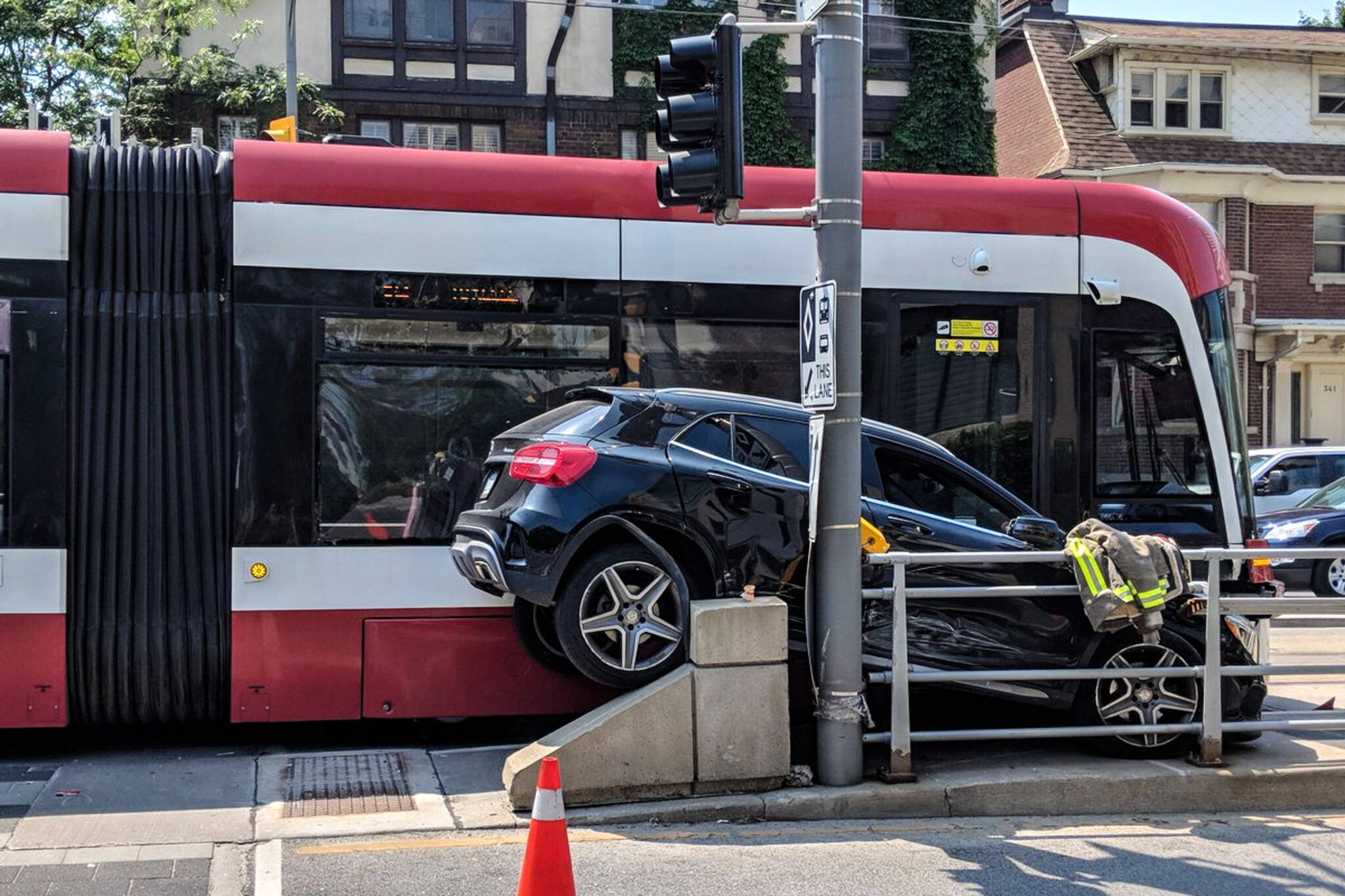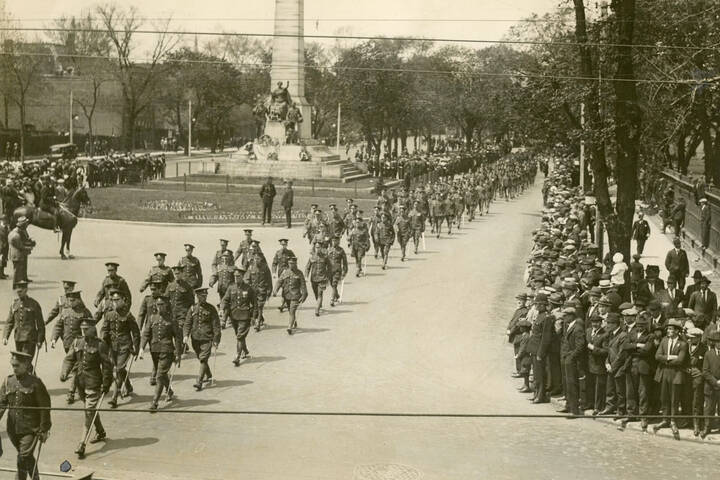
Someone wedged their SUV between a pole and streetcar in Toronto
How does an SUV get lodged between a moving streetcar and a traffic signal pole, with its rear-end raised at least three feet in the air?
TTC officials aren't sure, exactly, but we do now know that it's possible thanks to a motorist who proved so over the weekend.
Toronto police reported around 11 a.m. on Saturday that a car had become "squished between" a pole and a streetcar on St. Clair West near Spadina Road.
I drove past the "streetcar squeeze" incident earlier today on St. Clair. Zoom in to see. pic.twitter.com/iqed2PFpza
— Carla Rosemary Wilson (@carlarwilson) June 30, 2018
Service on the 512 line was suspended for about two hours as paramedics, police and fire crews worked to free the vehicle's occupants.
Neither TTC sources nor police could immediately confirm how the Mercedes SUV got lodged where it did, but witnesses — and there were a lot of them, judging by all the photos — shared some of what they saw on Twitter.
Hot tip: don’t play chicken with a streetcar. The streetcar ALWAYS wins! Pretty sure there will be no service around St. Clair & Spadina for awhile... They were talking about getting a tow truck to pull the streetcar back. Yikes! #TTC pic.twitter.com/qOwguyEr9y
— Sue Holland (@suesthegrl) June 30, 2018
"The SUV tried to make a right from Spadina onto St. Clair at the last minute and didn't make it in time," wrote one. "The streetcar hit him full throttle as he had the [r]ight of way... so the guy got dragged with the streetcar right through the intersection where he wedged in."
Ouch.
Similar to #BikeTO cyclists not always being safe on protected bike lanes, streetcars are not safe on protected streetcar tracks!!! I hope there were no passengers waiting at the near end of the stop. Spadina Rd. and St. Clair. #SUVsKILL #TorontoDriving #TODeadlyStreets pic.twitter.com/MWVp8l64kw
— HighVis_T.O._Cyclist (@HighVis_Cyclist) June 30, 2018
There were no serious injuries as a result of the collision, according to police, but the streetcar itself was damaged and had to be taken out of service.
The people of Toronto continue to be mystified as to how such an incident could ever occur, but what else is new?
Latest Videos
Latest Videos
Join the conversation Load comments







